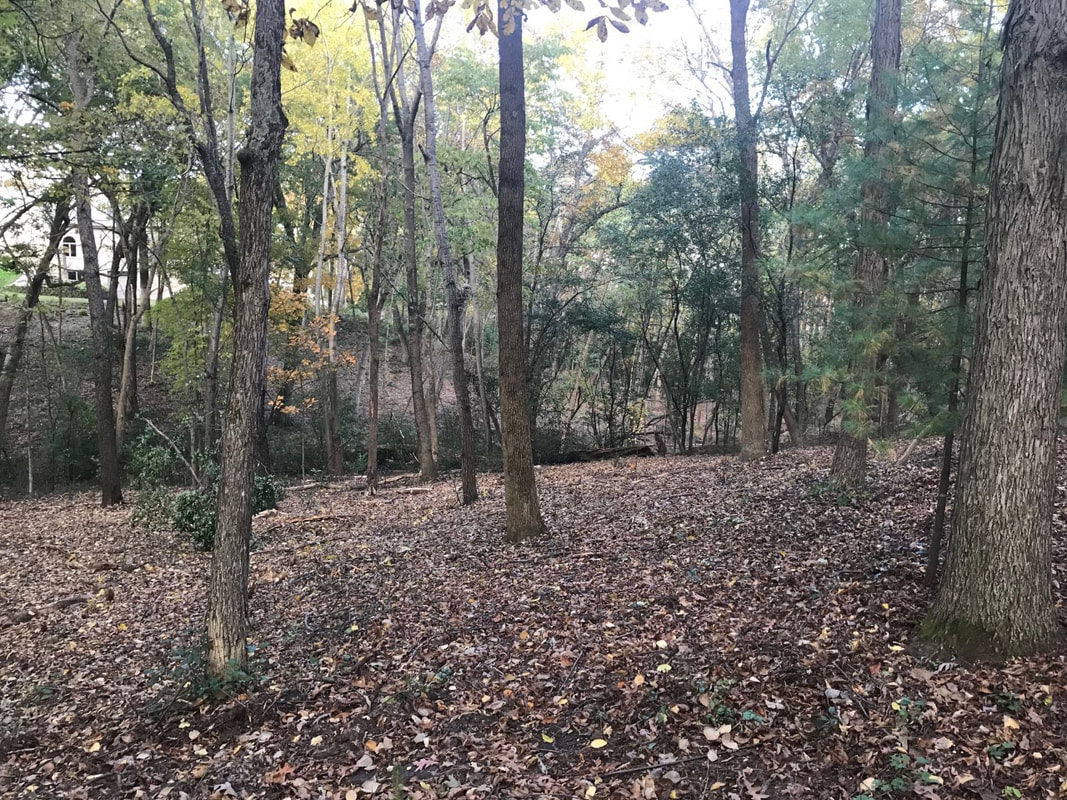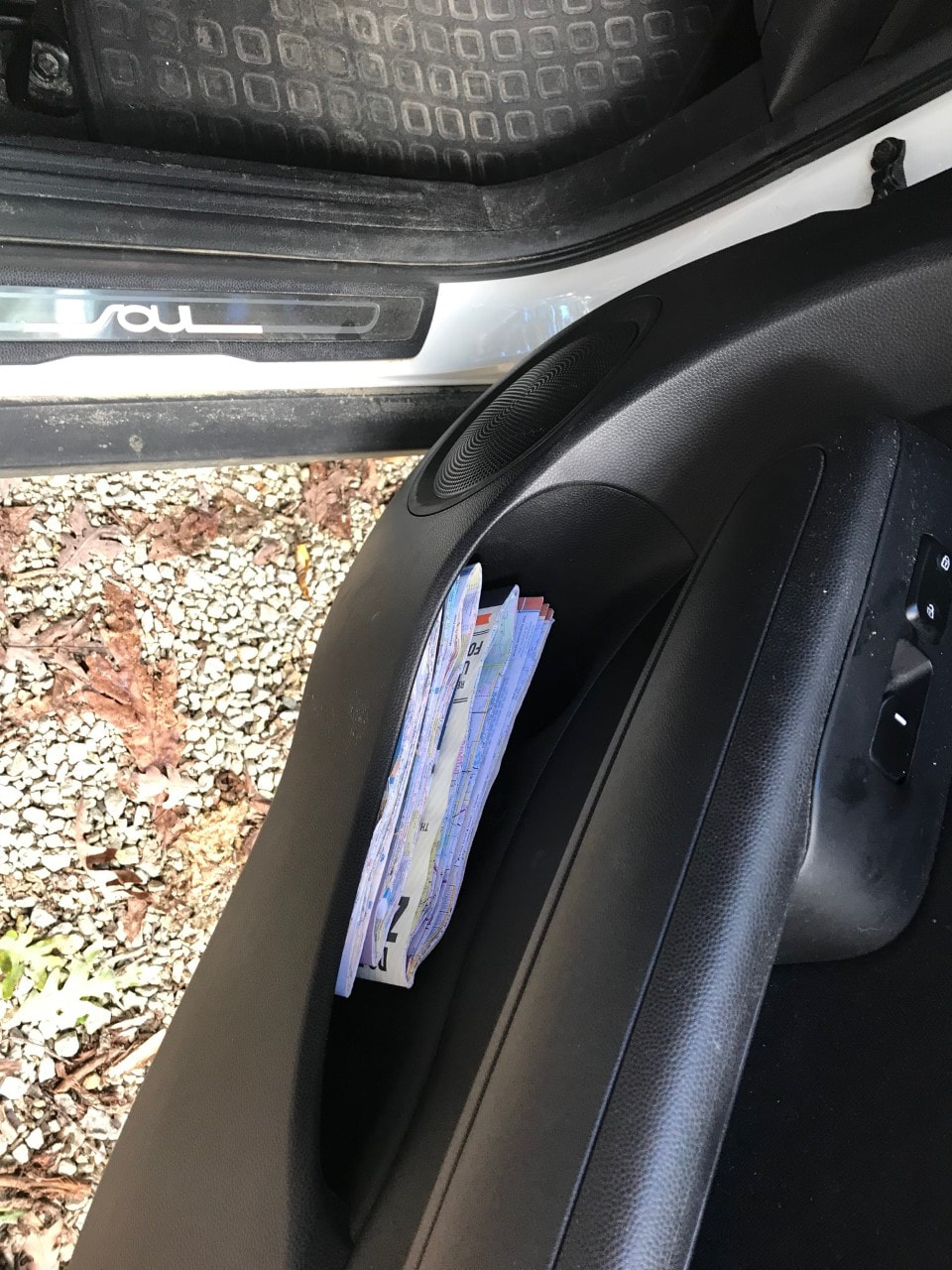 The buckthorn must die. That’s become apparent the past year in the woods around house. An invasive species, the ornamental shrub was brought to North America in the early 1800s to serve as a hedge divider. Kept short and trimmed, it grows thick, providing a shield from your neighbors. The thorns create a barrier as well, stabbing anyone or anything attempting to get through the hedge. The problem, of course, like any invasive species, is that once released it grows like a wildfire in a tinder dry forest. It takes over, choking out big, historic, majestic deciduous trees. Buckthorn sucks up the water with its roots, and prevents the water and nutrients from getting to the other trees. This infestation slowly causes your bigger trees to choke. This year, we saw this happening in the trees surrounding our house. Over multiple months, my wife Debbie and I debated what to do. There are options to kill the buckthorn, none easy. They take a lot of time or poison or continued cutting of the shrub until it exhausts itself trying to grow. Early in the year, our thoughts focused on goats, and bringing them in to chow the buckhorn down. After examining that option from multiple angles, we realized it didn’t make sense, as the goats would have to be penned from area to area and leashed, while anything you didn’t want to have them eat would have to be fenced for protection from their ravenous appetites. Deb tried cutting much of the buckthorn down herself with a power blade, taking on section by section of our woods on a weekly basis, rationing herself to two rounds of gasoline in the tank before retiring the tool for the day. Progress was made, but not without a lot of sore muscles. It was a dent in the infestation, but not a victory. We talked about applying Roundup to Buckthorn stumps after cutting it down, but didn’t want the poison on our land. Then we saw our neighbors bring in a guy with a grinder tractor that plowed through all the undergrowth, ripping it all to leave behind wood pulp on the forest floor. The buckthorn undergrowth disappeared, and views through the forest opened up, not something we necessarily wanted, so we continued to be stymied about what to do next. Finally we agreed to pursue the tractor grinder and hired the guy in to rip through our woods. It took a day. Bush after bush fell. The scent of freshly ground wood permeated our land. Views opened up to our neighbors, and though we like our privacy, we found ourselves accepting the newly-opened vistas through the tall remaining trees. Fall is now here. Leaves are changing and dropping to cover the forest floor. We’ve grown to like how the woods look these days. Deb has shredded some of the buckthorn missed by the grinder tractor. Some of it will insidiously sprout again next year. We’ll be ready. There will be more chopping and swinging a sickle, using the power blade, running the lawn mower over the shoots that sprout at the edge of the woods by our driveway. The work will keep us busy and sore. We’ll be challenged. We expect the battle to continue. “Death to the Buckthorn” is our cry.  It’s hard not to using technology for directions. From the invention of GPS, to apps like Waze, the entire concept of figuring out how to get someplace in your vehicle has transformed over the past 15 years or so. I’m not sure someone starting to drive today even knows what the headline of this column -- “Old School Directions” – means. “Dad, you mean you used to drive into a gas station and ask a local person how to find an address?” “Yup, son, that’s the way we did it back in the dinosaur days of 2004.” This past weekend, a friend from high school drove down to meet me so we could ride together to our high school reunion. We’re both throwbacks in different ways to older approaches of looking at and solving problems. When we connected and agreed to drive together, I shot him a text on how to get to our house, which doesn’t appear on every app for some satellite-related reason. He didn’t bat an eye. “See you then,” was the response. We didn’t communicate for a week. I sent him a reminder. “Got it,” he replied. That Thursday evening, within 30 minutes of expected arrival, he drove down the gravel driveway to our house. He cheated a bit by printing out the Google map to bring along, but he basically navigated the old school way, following my directions, knowing the route beforehand, and hitting all the landmarks in the proper order. It was heartening, and in some ways a connection because we had this similar approach to finding out where we were going, and we both minimize our reliance on technology. Instead we use our visual senses and memory, important qualities we’re losing these days by over-reliance on technology to make decisions for us. A couple of jobs ago, I worked with a guy who I think was 28 at the time. Great guy, a lot of fun, tech savvy. He relied on Waze to get up in the morning and tell him what to do. One time we tried returning to a customer’s location from the previous day and as we left the parking lot of our business, he asked me whether to turn left or right. He’s so completely blanked on where we’d been the day before (and relied on Waze to “tell” him where to turn) that he had no idea of the very first step out of our parking area. He’s gotten a bit better about paying attention and coming to recognize his surroundings, but his first instinct is still to trust technology and let it make the decision. I understand that draw – it simplifies your life and let’s you focus on other things. At the same time, there is much lost. The simple act of sending directions to a friend to help him find your place produces a certain joy as we explore the world. You know how to get somewhere. It’s a developed skill. It shows you know a tiny slot of land on this vast planet. Our high school reunion included a lot of other great memories. Connecting with my buddy to start got us off on the right foot, a small sense of accomplishment. And don’t get me started on my joy at seeing several maps folded up in his car as we set off. |
Archives
June 2024
Categories |